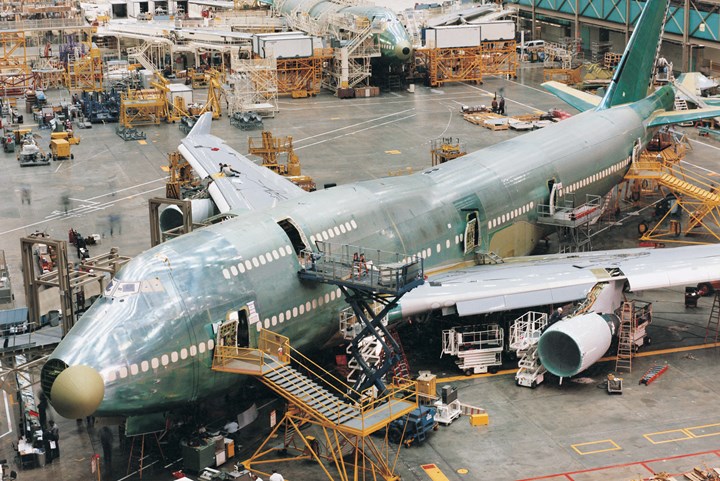Share

Photo Credit: Getty Images

I started my career in aerospace many years ago, working for the marketing department of a very large and well-known manufacturer. Sales and marketing management always used to say that their most effective sales technique was to promise customers the “impossible.” We would write proposals offering cost, weight and performance that pushed well beyond the limits of current technology. More often than not, our customers went for this and awarded us the business. Fast forward six months or a year into the program. My previous employer was not delivering as (optimistically) promised, but by then the customer was so far into the program it was usually too late to re-source. Our management then used to joke that the customer was “pregnant” with us. What followed were the inevitable schedule slips and cost overruns.
I place blame for the sorry state of many new and important aerospace programs on over-aggressive sales and marketing. At the same time, you can’t really blame the sales folks. After all, they are graded on winning new business and are going to do what they have to in pursuit of that goal.
Let’s examine a common scenario in aerospace composites manufacturing: A customer design-engineers a large part and specifies machine part tolerances. A reasonable dimensional tolerance for large composite parts is ±1.0 millimeter, or about ±0.040 inch. Your customer is asking for dimensional tolerances of ±0.25 millimeter, or around ±0.010 inch. This requirement is driven by a global supply chain, with the intent of bringing in complex parts and subassemblies built all over the world and bolting them together on the final assembly line.
Composite parts are made of resins and fibers. Fiber diameters have a dimensional tolerance range and resin content has a tolerance range. It is possible, if not likely, for these tolerances to “stack up,” making large parts difficult or impossible to build to print. Everyday supply chain issues can only add to these difficulties. Tightening composite part tolerances from 1.0 millimeter to 0.25 millimeter might double, triple or even quadruple cost. As discussed previously, holding these tolerances on really large parts might not be practical or even possible. Your choices as a bidder are:
- Advise the customer that their tolerance requirements are going to be very difficult to maintain and ask for larger tolerances. You might even quote variable pricing based on a relaxation in tolerance requirements in order to provide incentive for the change.
- Bid the job as is without reference to tolerance challenges and worry about manufacturing and quality problems later.
Evaluating bid #1 above requires additional effort on the part of the customer, with a very real risk that your proposal will be rejected as non-responsive. Evaluating bid #2 above is easy; all the customer contracts department has to do is compare pricing amongst bidders. The ironic part of this “competition” is that the customer is eliminating actual manufacturing expertise from the award formula and adding risk. The most skilled vendor with the most real-world manufacturing expertise will always lose out to a low-cost, build-to-print shop, or some kind of crazy new (unproven) tooling and manufacturing process. Always a recipe for disaster.
Disaster is probably too broad a term. Let us be more specific. In any manufacturing environment, our mortal enemies are always lost time, scrap and rework. These costs are insidious and can quickly build up to cripple any program. I have seen it happen again and again over my 40 years of experience, with no specific aerospace or composites manufacturing program in mind. Some companies have the fortitude to recognize and address these problems directly. Others devise elaborate work-arounds and bury all the additional costs in overhead. This is not a good long-term solution.
By now everyone should see where I am going with these arguments. Sticking with established, reliable vendors, tooling and manufacturing techniques would go a long way towards reducing the endemic problems we are seeing in the aerospace composites industry right now. You get nothing for free. You either pay for the tooling and manufacturing expertise up front, or the lack thereof will haunt your program until its dying day.
About the Author
Steve Zeller
Steve Zeller is president of Southbrook Technologies Inc. (Alpharetta, Ga., U.S.) and has more than 40 years aerospace manufacturing experience. He is honored and privileged to have worked with many of the “old timers” who built the composites industry up from scratch. He can be reached at southbrooktechnologies@gmail.com.
Related Content
Composites opportunities in eVTOLs
As eVTOL OEMs seek to advance program certification, production scale-up and lightweighting, AAM’s penetration into the composites market is moving on an upward trajectory.
Read MoreReducing accidental separator inclusion in prepreg layup
ST Engineering MRAS discusses the importance of addressing human factors to reduce separator inclusion in bonded structures.
Read MoreThe next-generation single-aisle: Implications for the composites industry
While the world continues to wait for new single-aisle program announcements from Airbus and Boeing, it’s clear composites will play a role in their fabrication. But in what ways, and what capacity?
Read MoreThe evolution, transformation of DEA from lab measurements to industrial optimization
Over the years, dielectric analysis (DEA) has evolved from a lab measurement technique to a technology that improves efficiency and quality in composites production on the shop floor.
Read MoreRead Next
“Structured air” TPS safeguards composite structures
Powered by an 85% air/15% pure polyimide aerogel, Blueshift’s novel material system protects structures during transient thermal events from -200°C to beyond 2400°C for rockets, battery boxes and more.
Read MorePlant tour: Daher Shap’in TechCenter and composites production plant, Saint-Aignan-de-Grandlieu, France
Co-located R&D and production advance OOA thermosets, thermoplastics, welding, recycling and digital technologies for faster processing and certification of lighter, more sustainable composites.
Read MoreAll-recycled, needle-punched nonwoven CFRP slashes carbon footprint of Formula 2 seat
Dallara and Tenowo collaborate to produce a race-ready Formula 2 seat using recycled carbon fiber, reducing CO2 emissions by 97.5% compared to virgin materials.
Read More























